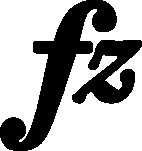



|
b. 5-6
|
composition: Op. 10 No 2, Etude in A minor
..
In EE Fontana added here the fingering which was the literal repetition of Chopin's indication for the upper voice in bars 1-2. category imprint: Differences between sources issues: EE revisions |
|||||||||
|
b. 5
|
composition: Op. 10 No 12, Etude in C minor
..
In the main text we suggest a possibility of adding category imprint: Differences between sources |
|||||||||
|
b. 5
|
composition: Op. 10 No 12, Etude in C minor
..
Not being certain whether the lack of sempre legato in FE (→GE,EE) is accidental, we give the indication in brackets. In bars 45-46 the analogous passage is embraced with slurs in all sources, which indirectly confirms the legato articulation also in this case. In spite of the fact that the indication in A begins only in the 2nd group of semiquavers, its binding force from the beginning of the passage is undeniable. category imprint: Differences between sources issues: Inaccuracies in FE , Centrally placed marks |
|||||||||
|
b. 5-6
|
composition: Op. 10 No 11, Etude in E♭ major
..
In A there are visible traces of a change of the bottom note in the 3rd chord in bars 5-6 (as well as in bars 13-14, which are marked in an abbreviated form in A as a repetition of bars 5-6). Originally, all the places featured c2, hence Chopin proceeded from the strictly analogous version to bars 1-2. Cf. bars 37-38. category imprint: Corrections & alterations; Source & stylistic information issues: Corrections in A |
|||||||||
|
b. 5-13
|
composition: Op. 10 No 5, Etude in G♭ major
..
Chopin added the pedalling in bars 5 and 13 in a proofreading of FE. At the same time, the category imprint: Interpretations within context; Differences between sources; Corrections & alterations issues: EE revisions , Inaccuracies in FE , GE revisions , Authentic corrections of FE , No pedal release mark |




 in
in 








 mark in bar 13 was omitted, which is certainly a mistake (of Chopin or the engraver). The missed sign was added in
mark in bar 13 was omitted, which is certainly a mistake (of Chopin or the engraver). The missed sign was added in